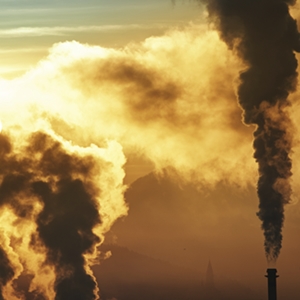
Scientists have detected four new man-made gases that damage the earth's protective ozone layer, despite bans on almost all production of similar gases under a 1987 treaty, according to a new study.
The experts were trying to pinpoint industrial sources of tiny traces of the new gases, perhaps used in making pesticides or refrigerants, that were found in Greenland's ice and in air samples in Tasmania, Australia.
The ozone layer shields the planet from damaging ultra-violet rays, which can cause skin cancer and eye cataracts, and has been recovering after a phase-out of damaging chemicals under the UN's 1987 Montreal Protocol.
Not yet a threat
"The concentrations are not yet a threat to the ozone layer," lead author Johannes Laube of the University of East Anglia in England told Reuters of the three types of CFCs (chlorofluorocarbon)and one HCFC (hydrochlorofluorocarbon).
In total, the scientists estimated more than 74 000 tonnes of the four had been released to the atmosphere. None was present before the 1960s in Greenland's ice cores, according to the study in the journal Nature Geoscience.
That is only a small fraction of the million tonnes of CFCs produced every year at a 1980s peak, according to the team of scientists in Britain, Germany, Australia, France, the Netherlands and Switzerland.
Read: Greenhouse gas emissions cut
Tightening loopholes
Laube said it was unknown if the emissions of the new gases were illegal, since the Montreal Protocol has some exemptions. "We hope to tighten the loopholes," he said.
A hole in the ozone layer was found in the 1980s over Antarctica but bans on damaging chemicals, for instance used in hairsprays, foams and refrigerants, means it is on target to recover in the next 50 years.
HCFCs have often been used to replace more damaging CFCs.
One of the newly discovered CFCs was worrying since concentrations were rising fast, Laube said. Such emission increases had not been spotted for other CFCs since the 1990s.
Origin of gases
The gases were detected earlier in Greenland than Tasmania, indicating they were produced in the northern hemisphere and then blown south. Research planes, taking air samples around the world, may be able to find the sources, Laube said.
Read: Nature fighting greenhouse gas
"While these newly discovered gases can, in theory, cause some damage to the ozone layer, their combined abundance is over 500 times smaller than that of the main ozone-destroying compounds in the 1990s," said Martyn Chipperfield, a professor of atmospheric chemistry at the University of Leeds.
"These new observations do not present concern at the moment, although the fact that these gases are in the atmosphere and some are increasing needs investigation," he said.
Laube said the gases are also likely to be powerful greenhouse gases, albeit in tiny amounts. CFCs are often thousands of times more powerful than carbon dioxide at trapping heat in the atmosphere.
Read more:
Arctic Ocean may give off methane
SA failing as climate leader




 Publications
Publications
 Partners
Partners














